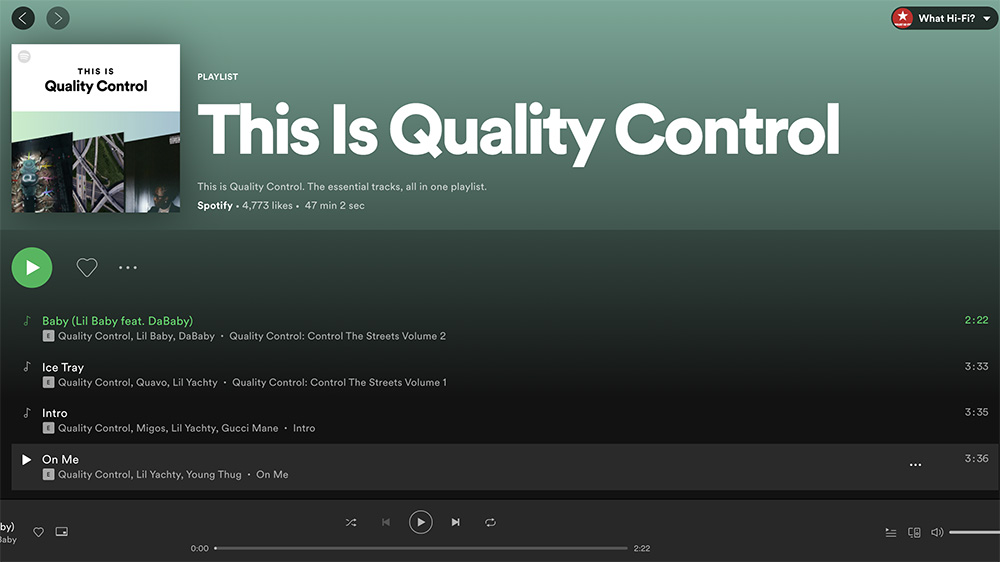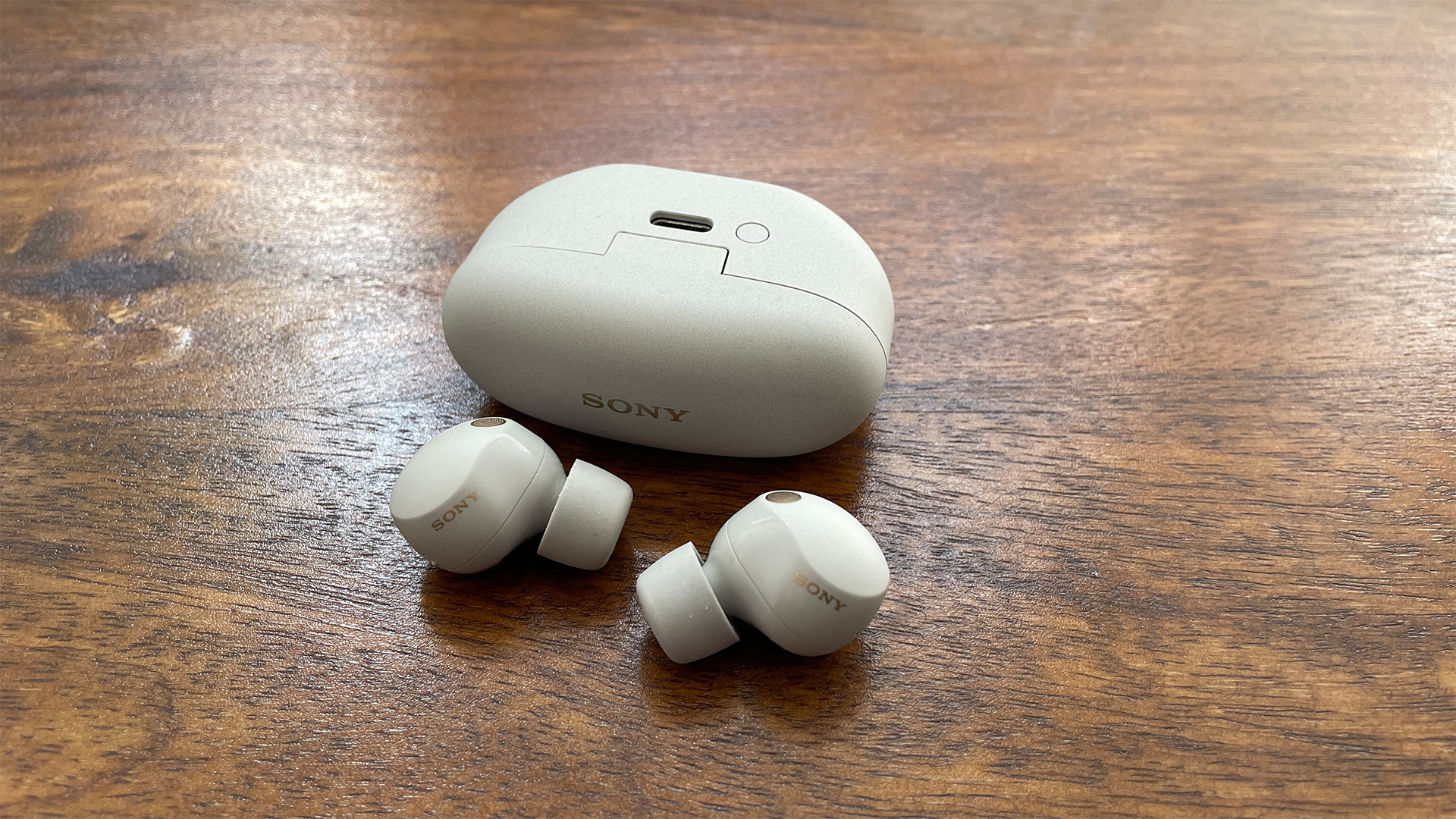Where is Spotify Hi-Fi? And do we still want a lossless Spotify tier?
Has the moment passed for the popular music service?

Spotify has just announced that it is finally launching Spotify HiFi later this year. The CD-quality tier will be compatible with Spotify Connect, allowing subscribers to stream higher-quality music between their phones and Connect-enabled devices.
In March 2017, a Spotify Hi-Fi subscription tier was teased by the green giant itself: some Spotify Premium subscribers in the US were offered lossless, CD-quality (1411kbps) streams in the app for an extra $7.50 per month – a vast improvement on the 320kbps streams they typically offered.
At that time, we were already blessed with CD-quality offerings from rival services Tidal, Qobuz and Deezer. Tidal was even three months into its now well-established Tidal Masters offering, which introduced hi-res 'better than CD-quality' streaming.
But despite this, Spotify introducing a lossless, CD-quality option, let alone hi-res audio, would have been welcomed back then. It was (and still is) the most popular service of its kind – currently with over 130 million subscribers, compared with Amazon Music’s 55 million and Apple Music’s 60-odd million.
So what better way to promote the importance of high-quality music than to offer it as part of the world's most popular streaming service?
But, some three years later, all has gone quiet in the Spotify camp regarding any lossless audio quality. In the meantime, other services have steamed ahead. So where is Spotify Hi-Fi? And do we even want it any more?
The state of play
Spotify’s audio quality limit is still 320kbps (the maximum bitrate threshold for MP3), which it calls ‘very high quality’ in its audio settings menu. This is available to Spotify Premium subscribers at a cost of £9.99 ($9.99) per month.
The latest hi-fi, home cinema and tech news, reviews, buying advice and deals, direct to your inbox.
For comparison, the ‘average’ bitrate offered by Amazon Music HD’s highest quality ‘Ultra HD’ hi-res streams is 3730kbps (according to Amazon) and is available to Prime members for £12.99 ($12.99) per month or, for non-Prime members, £14.99 ($14.99) per month. Tidal’s £19.99 ($19.99) per month HiFi tier offers 1411kbps CD streams, with its hi-res Masters again offering much higher quality than that.
You don’t need to be particularly well versed in audio bitrates to see that there is plenty of room for Spotify to up its audio game. With some services, including Amazon, Tidal and Qobuz, now offering not only CD quality but also hi-res tracks, Spotify is essentially two steps behind.
And there is at least some demand. You only need to read the multiple threads about hi-res requests on Spotify’s forum, or consider the subscribers of Tidal and Amazon's hi-res tiers (although neither has released exact numbers), to see that plenty of people do care. That said, it’s safe to say they don’t represent the majority of Spotify’s 280-odd million users. And Spotify knows that.
In response to Amazon launching its hi-res service, Spotify’s chief financial officer, Paul Vogel, told The Verge: “A high-quality option is not something that’s been a big differentiator among services. It’s really about the user interface, algorithms, playlists and discoverability. In terms of what consumers are looking for, it’s not something that has really resonated.”
While Spotify was almost certainly testing the waters for a Hi-Fi tier back in 2017, it clearly isn't at the forefront of the company's priorities now. In fact, the chances of it coming to fruition anytime soon seem pretty low.
Instead, Spotify is busy expanding into new markets (it recently reached 92 countries), introducing new subscriptions (most recently, Duo) and launching new top chart podcasts and real-time lyrics, for example – all worthy developments to maintain its global domination; to grow its subscriber base and keep it appealing to streamers today.
Do we still want Spotify HiFi?
In a word, yes. We’d love Spotify, the world’s biggest music streaming service, to champion high-quality music. However, thanks to a trio of fine alternatives, including Amazon flying the hi-res flag for mass-market streaming... we can't say we need it.
But we're as disappointed by Spotify's absence as anyone. The impact Spotify Hi-Fi would have on audiophiles is clear: they'd get better sounding music and, presuming CD/hi-res compatibility was implemented within the Spotify Connect feature, a simple way to stream it to networked wireless speakers and music systems – in the same way Google Chromecast does for Tidal’s hi-res streams.
Spotify leads the way with world-class curation and a wealth of discovery features, including its own branded playlists, such as Discover Weekly and Daily Mixes, and it would be great to be able to enjoy them in high quality.
Artists would have the satisfaction of their fans hearing music even closer to how it was intended. Of course, it would also build on Amazon's efforts to promote the importance of good audio quality, and why it matters in the mainstream market.
Good news, bad news
The suggestion three years ago was that Spotify would ask between $5 and $10 extra (presumably £5 and £10) per month for a lossless tier. To compete with Amazon Music HD, which undercut the £19.99/$19.99pm standard for CD-quality and hi-res streams, it would presumably be closer to the latter.
Those who care about audio quality might perhaps pay a little more for Spotify’s class-leading experience, device integration and handy Spotify Connect feature. But would Premium subscribers be happy paying more than their current monthly fee? That’s the big question but, sadly, it doesn’t seem we’ll get an answer anytime soon.
That will, however, be music to the ears of Amazon, and especially Tidal and Qobuz, who could struggle if Spotify decides to raise its game. Audio quality is their main USP – take that away and you wonder how they would compete.
So, no Spotify HiFi on the horizon might be bad news for its subscribers who crave higher-quality audio, but it's possibly good news for rival services, and those of us who enjoy them.
MORE:
How Spotify saved the music industry but left some genres behind
33 Spotify tips, tricks and features
16 hi-fi and home cinema products we want to see in this world
Save 95% on hi-res streaming! Tidal HiFi now just £1 per month

Becky is a hi-fi, AV and technology journalist, formerly the Managing Editor at What Hi-Fi? and Editor of Australian Hi-Fi and Audio Esoterica magazines. With over twelve years of journalism experience in the hi-fi industry, she has reviewed all manner of audio gear, from budget amplifiers to high-end speakers, and particularly specialises in headphones and head-fi devices.
In her spare time, Becky can often be found running, watching Liverpool FC and horror movies, and hunting for gluten-free cake.
